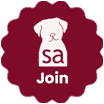Herding

Herding is fun and a great social activity. It gets you outdoors, keeps you active and is good exercise for all involved. Herding will intensify the relationship between you and your dog. It's a great pleasure to watch dogs perform the basic farm work they once were used for. Ask any handler and they will describe the satisfaction in learning to work your own dog.
Herding is complex and very challenging to learn, but well worth the effort!
About Herding
Herding is fun and a great way to meet new people. It will help you bond with your dog and it will get great rewards from doing work that it was bred to do.
Why should breeders be interested in herding?
Participating in herding helps you keep perspective between the breed’s original functionality - and the modern aesthetic requirements of the conformation ring. It confirms a breed’s correct temperament, soundness, endurance, trainability, pad, and foot and coat quality to mention a few.
What is the Dogs Australia Herding program?
The Dogs Australia program aims to preserve the working instinct and ability of all breeds with herding origin. This can be easily lost when breeding for exhibition in the show ring. Many of these breeds have working styles that differ greatly from the modern sheepdogs we see in Australia today. Like all herding dogs they developed as a response to local conditions and needs in the breed’s country of origin. Many of these through pedigree recording and exhibition went on to be recognised as pure breeds.
The Dogs Australia Herding Program is designed to preserve the traditional working styles and herding instinct in all breeds with herding origin and recognise these by way of instinct certificates and herding titles.
What dogs are eligible for Dogs Australia titles?
All breeds of herding origin are welcome:
Dogs Australia Group 5 breeds.
Other Dogs Australia recognised herding breeds: Bernese Mountain dogs, Norwegian Elkhound, Samoyed, Keeshond, Kerry Blue, Tibetan and Soft Coated Wheaten Terriers, Schnauzers (Standard) and (Giant), Rottweiler and Tatra Shepherd Dog.
Dogs that are registered on the Associate Register and are clearly a mix of herding breeds.
Dogs which are registered on the Sporting Register.
What titles can I earn?
Dogs Australia titles can be earned on sheep, cattle and ducks. They progress through the non competitive tests- herding test (HT) and Pre-trial test (PT). Then you move to trial level- where handlers & dogs can compete on three different courses at three levels- Herding Started, Herding Intermediate and Herding Advanced. A Herding Champion is a dog that has its Advanced title on two different types of stock and has earned 15 championship points on each of those stock- with a minimum of a first place in each. Very difficult!
What age can I start my puppy?
It is recommended that dogs needs to be around 6 months of age – though some trainers like to start them earlier.
Care needs to be taken introducing puppies to stock as one bad experience as a sensitive puppy cannot always be undone. You also have to balance the physical and mental demands of herding with the relative maturity of your puppy - some can start earlier than others. Your puppy must be at least 6 months of age before it can enter an Dogs Australia Herding Instinct Test.
What do I wear?
Safe attire for a handler is protective - a hat, a comfortable shirt, long pants and tough covered shoes. You need practical clothing that won’t get caught but allows you to move around - think farmer! Your dog needs to wear a flat buckle or snap collar that cannot be pulled over the head. A long leash (6ft) is essential.
What prior training does my dog need?
Your dog needs to know its name and come when it’s called as a minimum. All other commands can be trained on stock. Herding dogs need to work away from the handler - so very highly trained obedience dogs may take a little longer to free themselves up and start working.
For further information, please contact

